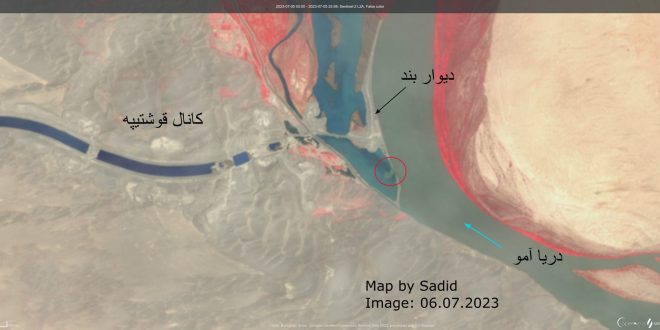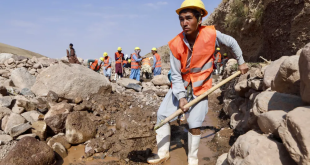KABUL – The Taliban-led administration in Afghanistan is nearing completion of the massive Qosh Tepa Canal, a controversial and transformative infrastructure project that aims to reshape the country’s agricultural future. Spanning 285 kilometers through the northern provinces, the canal is designed to divert water from the Amu Darya River to irrigate up to 550,000 hectares of arid land—roughly the size of all the farmland in eastern Afghanistan.
Phase one of the project, which includes the main canal stretch and some basic distribution channels, was completed in October 2023. As of mid-2025, phase two is reported to be more than 80% complete. If successful, the canal could convert vast swathes of desert in Jawzjan, Balkh, and Faryab provinces into fertile farmland, potentially boosting domestic food production and strengthening Afghanistan’s push for economic self-sufficiency.
Launched in March 2022, the Qosh Tepa project is entirely Afghan-funded and constructed under the Taliban government—making it not only a national endeavor but also a political statement. The Taliban have framed the canal as a symbol of independence and resilience, particularly at a time when the country remains under international sanctions and lacks formal diplomatic recognition.
However, the project has been met with skepticism and alarm both inside and outside Afghanistan. Independent engineers have raised concerns about the canal’s construction quality, warning that the lack of technical oversight and advanced equipment could lead to long-term operational problems, such as water leakage, inefficient flow control, and soil erosion. Satellite images and on-the-ground videos appear to show a rudimentary excavation process with limited use of modern surveying or lining materials.
Neighboring countries, especially Uzbekistan and Turkmenistan, have expressed unease about the canal’s impact on the already shrinking Amu Darya River. The river is a crucial water source for agriculture across Central Asia, and any diversion on the Afghan side could disrupt regional water-sharing agreements and worsen tensions in an already fragile geopolitical environment. Environmentalists have warned that the project could accelerate desertification downstream and impact millions of people in Central Asia who depend on the river.
Despite these challenges, Taliban officials have pledged to continue the canal’s construction with or without international support. They argue that Afghanistan has long been denied its fair share of the Amu Darya’s water, and that this project is a long-overdue correction to decades of underdevelopment and water reliance on neighboring countries.
Once completed, the Qosh Tepa Canal could become Afghanistan’s largest post-war infrastructure project and a cornerstone of its agricultural economy. But its success will depend not only on physical completion, but also on long-term sustainability, effective water management, and regional diplomacy—factors that remain uncertain under current conditions.
 Afghanistan Times
Afghanistan Times




